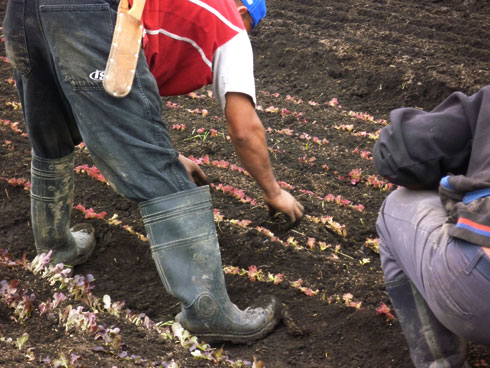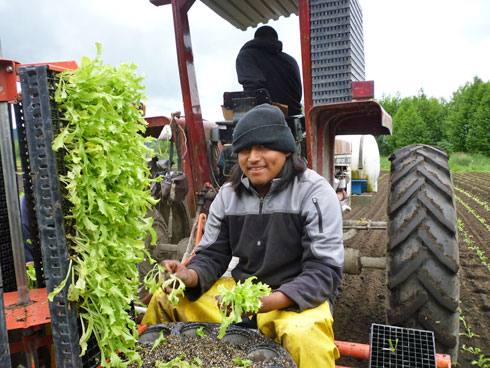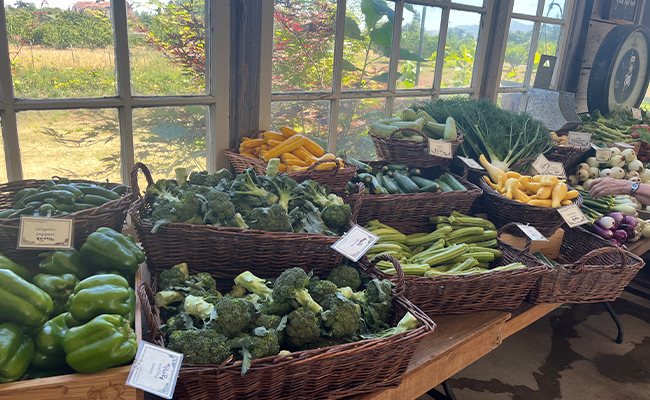The Growing Season Shifts West: And We’re Off!
With the Columbia Basin growing season well underway, farmers here on the west side are catching up. It seems to be around May 15th every year that we’re over the hump and the local season begins in earnest. The weather has been glorious, and although clear skies can mean very chilly mornings, nighttime temperatures are beginning to stabilize in the mid-to-upper forties. The forecast couldn’t be more favorable: after another week of warm and dry conditions, a few days of rain around the 21st will settle the dust, freshen the air, and set the stage for a perfect Memorial Day weekend.

At Full Circle, this means a major push in seeding and transplanting at the farm. Soil temperature is a critical factor in germination and growth. For each species of seed, there is an optimal soil temperature for germination: farmers aim for the maximum germination percentage in the shortest number of days. For instance, it’s too soon for snap beans, which need between 60 and 75 degrees, but it’s high time for peas! Peas can be planted when the soil is as cool as 40, but ideal germination occurs between 50 and 60 degrees. We’ve put in nearly 4 acres of sugar snap and shelling peas so far, and they should begin to emerge in about two weeks.
Transplants too are faring well. Summer cucumbers have hit the soil, and another couple of acres of broccoli, chard and cabbages are in the ground as of last week. High water is no longer a threat; it will soon be time to put the bridge across Griffin Creek so we can access the berry field. It will be July before we see our blues and raspberries, but weeds must be put down and flowers removed from the newer plants so that they’ll develop vegetative growth for structure and yield further on down the road.

Speaking of berries, we recently paid a visit to Hayton Farms in the Skagit Valley. This beautiful family farm was established in 1876 as a dairy, growing hay and grain on rich Skagit River bottomland. In the nineteen-sixties, the family turned to crop farming; they now grow berries, potatoes, cucumbers, beets and cauliflower. Their carefully-chosen strawberry, raspberry, blueberry and blackberry varieties start soon and will continue to produce into the fall.
We met in the dining room of their picturesque old farmhouse, around a table graced by armloads of fragrant lilacs from the family garden. Old oil portraits and vintage farm photographs on the walls around us were a reminder of our state’s long farming tradition, and there were 3 generations of Haytons in the house that day. Although buying direct from smaller farms can mean higher prices than buying from a big outfit which consolidates and ships, we’re working on an agreement which will support the Haytons while enabling us to delight your palate with old-fashioned, farm-fresh flavor.


Leave a Reply